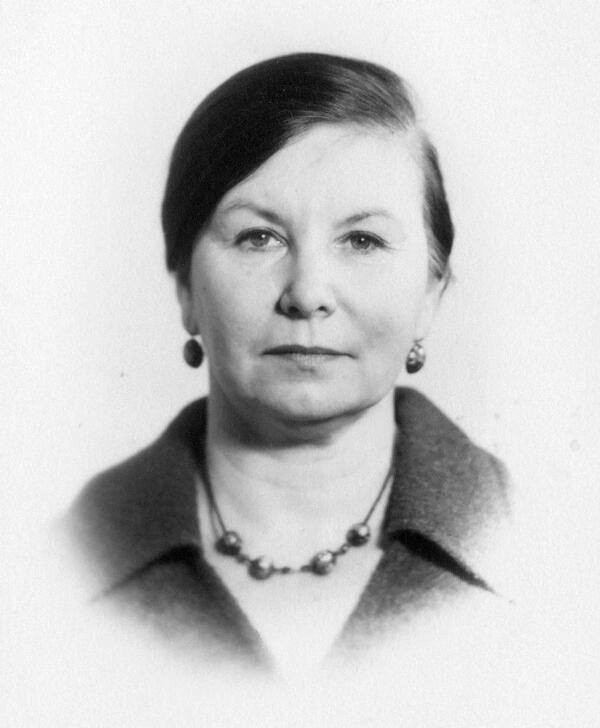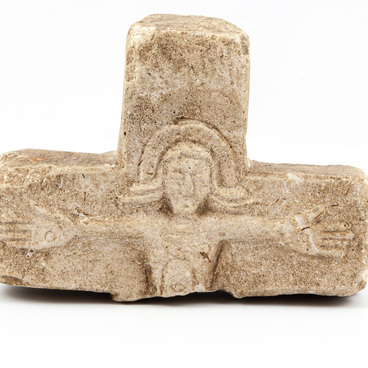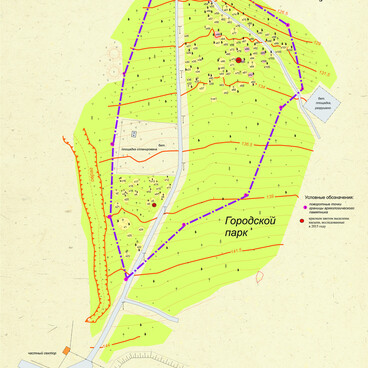This photograph from the museum’s collection portrays the Russian Slavonic archaeologist and Doctor of Historical Sciences Mariya Vladimirovna Sedova. She was born in Moscow in 1930 into the family of the Soviet romantic poet Vladimir Alexandrovich Lugovskoy and art historian Tamara Edgardovna Grubert.
After school, Mariya Vladimirovna entered the Faculty of History of Moscow State University and majored in Archaeology in 1953. She was immediately hired by the Institute of Archaeology of the Russian Academy of Sciences.
She dedicated over 10 years of her life to the famous archaeological expedition in Novgorod. Her efforts resulted in a monograph titled “Jewelry of Ancient Novgorod (the 10th — 15th centuries)”. This work was published in 1981 and brought her recognition as a major specialist in ancient Russian applied art.
In 1955, Mariya married the archaeologist Valentin Vasilyevich Sedov. Five years later, they had a son named Vladimir, who followed in his parents’ footsteps by choosing a career in the field of archaeology.
In 1957, Mariya Sedova began archaeological research in the Vladimir region. She carried on the excavations started by her husband in the Pirovo settlement — the site of Yaropolch-Zalessky mentioned in chronicles, which was destroyed during the Mongol invasion. The study of ancient Russian towns along the lower reaches of the Klyazma River helped Sedova to defend her Ph.D. thesis in 1972.
Between 1974 and 1991, Mariya Sedova headed excavations in Suzdal and its neighboring territories. Under her supervision, defensive fortifications of the 10th century were discovered. In 1976, she led the excavation of ancient mounds in Gorokhovets. The results of those long years of research were summarized in her doctorate thesis, which she defended in 1993.
Mariya Sedova published three monographs and about 100 articles on various aspects of ancient Russian history and culture. Her research contributed to the historical study of the Vladimir and Suzdal areas. Mariya Sedova died on September 23, 2004, and was soon followed by her husband, Valentin Sedov, who passed away on October 4, 2004.
After school, Mariya Vladimirovna entered the Faculty of History of Moscow State University and majored in Archaeology in 1953. She was immediately hired by the Institute of Archaeology of the Russian Academy of Sciences.
She dedicated over 10 years of her life to the famous archaeological expedition in Novgorod. Her efforts resulted in a monograph titled “Jewelry of Ancient Novgorod (the 10th — 15th centuries)”. This work was published in 1981 and brought her recognition as a major specialist in ancient Russian applied art.
In 1955, Mariya married the archaeologist Valentin Vasilyevich Sedov. Five years later, they had a son named Vladimir, who followed in his parents’ footsteps by choosing a career in the field of archaeology.
In 1957, Mariya Sedova began archaeological research in the Vladimir region. She carried on the excavations started by her husband in the Pirovo settlement — the site of Yaropolch-Zalessky mentioned in chronicles, which was destroyed during the Mongol invasion. The study of ancient Russian towns along the lower reaches of the Klyazma River helped Sedova to defend her Ph.D. thesis in 1972.
Between 1974 and 1991, Mariya Sedova headed excavations in Suzdal and its neighboring territories. Under her supervision, defensive fortifications of the 10th century were discovered. In 1976, she led the excavation of ancient mounds in Gorokhovets. The results of those long years of research were summarized in her doctorate thesis, which she defended in 1993.
Mariya Sedova published three monographs and about 100 articles on various aspects of ancient Russian history and culture. Her research contributed to the historical study of the Vladimir and Suzdal areas. Mariya Sedova died on September 23, 2004, and was soon followed by her husband, Valentin Sedov, who passed away on October 4, 2004.



